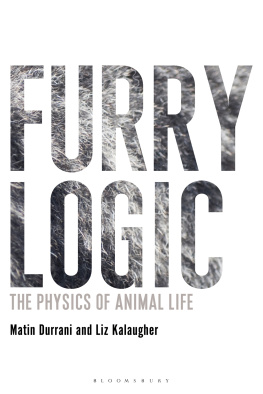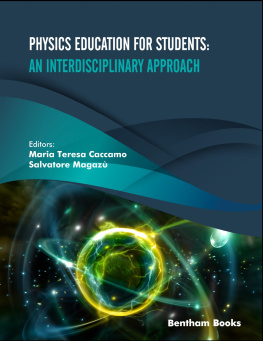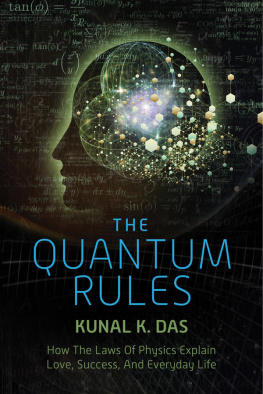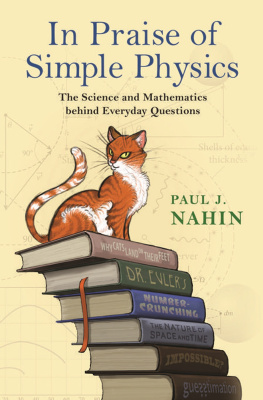
Also available in the Bloomsbury Sigma series:
Sex on Earth by Jules Howard
p53: The Gene that Cracked the Cancer Code by Sue Armstrong
Atoms Under the Floorboards by Chris Woodford
Spirals in Time by Helen Scales
Chilled by Tom Jackson
A is for Arsenic by Kathryn Harkup
Breaking the Chains of Gravity by Amy Shira Teitel
Suspicious Minds by Rob Brotherton
Herding Hemingways Cats by Kat Arney
Electronic Dreams by Tom Lean
Sorting the Beef from the Bull by Richard Evershed and Nicola Temple
Death on Earth by Jules Howard
The Tyrannosaur Chronicles by David Hone
Soccermatics by David Sumpter
Big Data by Timandra Harkness
Goldilocks and the Water Bears by Louisa Preston
Science and the City by Laurie Winkless
Bring Back the King by Helen Pilcher
To my parents, Saeed and Inge And to Katja, Chiara and Alex
Matin
To Sue, Patrick, Mags, Catherine, Justin, Daniel, Tom and Josh
Liz

Contents
We couldnt have written Furry Logic without the help of the following people, to whom were both hugely grateful.
To all the scientists whove been so generous with their time and knowledge, as well as being lovely people to chat to or correspond with, in approximate order of first appearance: Rick Shine, Andrew Dickerson, Claudio Lazzari, Masato Ono, Masami Sasaki, Aaron Rundus, Helmut Schmitz, Stephen Wroe, David Kisailus, Sheila Patek, Alyssa Stark, John Bush, Mark Denny, Roman Stocker, Michael Nauenberg, Sunny Jung, Brad Gemmell, Charlie Ellington, Matt Wilkinson, Angela Freeman, Holger Goerlitz, Bruce Young, Leo van Hemmen, Caitlin OConnell, William Turkel, Kenneth Catania, Daniel Robert, Ken Lohmann, Marian Plotkin, Rdiger Wehner, Matthias Wittlinger, Martin Stevens, Keita Tanaka, Shelby Temple and Snke Johnsen. Thank you for sharing your expertise, and apologies if weve inadvertently introduced any errors.
To our team of test readers: Mike Follows, Holger Goerlitz, Tania Hershman, Patrick Kalaugher, Maxim Kosek, Bernd Kramer, David Pye, Vijay Shah, Su Smith, Marric Stephens, Shelby Temple and Kate Watt. Thank you for your patience and intelligent insights. To Lotte Kammenga for introducing Liz to the explanation of flight in Cabin Pressure .
To everyone at Bloomsbury, including Jim Martin and Anna MacDiarmid for commissioning and editing this work, Aaron Gregory for the fantastic illustrations, and Marc Dando for the expert line diagrams.
Finally, a special note of thanks to Physics World features editor, Louise Mayor, who proposed and put together a special issue of the magazine on animal physics in 2012. It was the success of that issue that made us realise what a wonderful idea it would be for a book.

Its tough being an animal. Theres no central heating or air-conditioning to keep you at a safe temperature, no supermarket to provide supplies when youre peckish, and no walls to protect you. Jump into a river to catch fish and there wont be a towel ready to dry you when you wade soggily out, your body chilling fast. To survive, animals must use their senses, their wits, their mates, relations and pack-members (except for solitary species like the leopard), as well as their bodies, which have evolved over many years to suit their living conditions. And thats where physics comes in. Only recently have biologists and physicists realised just how impressive animals are when it comes to exploiting physics in their daily business of eating, drinking, mating and generally avoiding being killed. Even wet pet dogs use physics to shake themselves dry and soak anyone not quick enough to move away.
Its not that animals have worked out the principles of this science and designed their own bodies accordingly. Its that evolution has, over time, by gradual trial and error, come up with real-world systems that function well, using the science, principles and laws that humans call physics.
Animals got there first. The electric eel was firing off bursts of high voltage to kill crabs (see ) and applying the principles of electricity long before scientists knew what it was. The eel doesnt understand electric currents, but we dont need to know anything about transistors or circuits to use a smartphone either. As long as the phone is smart, we dont have to be.
Worms without the wormholes
Before we kick off, a word of reassurance. This book is about how selected animals use physics to survive in the wild. If youre scared of physics, dont worry, weve kept things simple. You wont need to be an Einstein to follow whats going on. Dont expect anything weird like dark energy, Higgs bosons or wormholes although we do mention worms at one point, or at the very least, snakes. On the other hand, if you are into physics, youll be astounded by how often and how niftily your favourite science crops up in the animal world. From furry cats and dogs to spiny lobsters, mosquitoes and giant squid, physics is everywhere.
For physics lovers, the key thing to remember about biology is that pretty much everything is centred around sex or food. Physics, despite its obsession with the Big Bang, less so. For their species to survive, animals must pass on their genes by producing young. In almost all cases they need food to live long enough to breed, and perhaps to give them the energy to care for their young so that they too last into adulthood. A notable exception is the male fig wasp. This eats in its larval stage inside the fig, but once it metamorphoses into an adult it can no longer eat as its mouthparts are withered. Its sole purpose is to mate before it runs out of energy and dies.
If biologys your bag, the key thing to remember about physics is that its much easier than biology. Honestly. If youre in a lab you have more control over your experiment. If you want to change just one thing (or one variable in science-speak) to test its clout, its a lot easier to do that inside a nice temperature- and humidity-controlled laboratory building sheltered from the weather than it is in a jungle. Or even a wildflower meadow, or, as we find out in , a zoo. And if you take the animal youre studying out of its environment, you dont know if thats made it behave differently. Leave that animal in its home, however, and you cant be sure if a variable youve changed has also altered something else another animal or another variable that you dont know about. And this might change your results without you being aware. So: biology hard, physics easy.
Now for the disclaimer: in Furry Logic sometimes we anthropomorphise, putting ourselves inside the heads of animals as if they were human. Biologists dont like this but its easier to tell stories that way and so we wont apologise, or only a little anyway. And sometimes, whisper it, we simplify the physics a shade so that it doesnt block the narrative.
Some people turn to popular science seeking order and logic in todays messy world. But lifes complicated. Sometimes the more you look at something the more complex it gets. Its like enjoying the beautiful colour and delicate scent of a rose, then examining it in close-up and seeing the velvety bloom on the petals, the veins at their pale base, the complex mini-forest of stamens and pollen dust at the centre, and the tiny hairs on the leaves underneath the bowl of the flower. Use a powerful microscope and youll see the biological structures that make the rose work its plumbing and individual cells. Unless youre seriously into botany, before you know it youve moved from pleasure and wonder to a bewildering world of fancy names and a flower that doesnt even look nice any more. It can be the same with physics explanations there are levels upon levels, some that please everyone and others that are best left to the super-enthused and the genius. Here weve aimed for a level that remains fun; sometimes this means glossing over the geekiest details in the interests of beauty and simplicity, and we hope youre happy with that. If not, youll probably enjoy looking up the equations and finer points yourself.













